Learning about passion
A couple of years ago I got some passion flower or "Maypop" vines. The small vines spent the first year in my temporary greenhouse -- which I no longer use -- and then in large pots. I planted one of them in the ground last year in the spring, so it could climb up onto the pergola over the patio. It did really well there last year and produced lots of amazing flowers and several fruits, but this year... wow.
It's going crazy this year! I expected it, but it's still so exciting. This weekend while I was photographing some of the blooms -- which I've done every year but can't help myself -- I learned a few things about these flowers which I didn't know already.
***
One thing I did already know is that bees love these flowers, but only the larger bumble and carpenter bees.
I see honeybees checking out the flowers once in a while, but they never hang around like the big bees do. I now know why, but I'll get to that in a minute.
As I was photographing a bee on this particular flower, I noticed that there was a bud nearby that was about to open. I thought I'd grab a shot of it in a minute, then also show some faded blooms and some fruits -- to show all of the different stages of the blooms.
As I concentrated on the bee, I caught a little movement out of the corner of my eye. At first I thought it was a bee checking out the not-yet-opened bud, but then I realized: the bud was opening! So I started taking photos, and watched the flower open right before my eyes! This whole process took less than 2 minutes, with most of the action happening within the first minute. Amazingly fast!
What I love most about this is how the anthers (the pads that hold the pollen) fold down then rotate into position. Incredible! Important too, as I can now explain.
So why do I only see the large bees visiting these flowers? They're built for it!
This is the first thing I learned about these flowers: where exactly the nectar was located, as they're so frilly and fancy I wasn't sure where it was. As you can see, it's right in the center, in the big "well". I wonder how much is in there, as these guys spend quite a few seconds at each bloom.
The second thing I learned is that there's a reason the anthers rotate when the bloom opens:
 |
| please click for larger version and full impact |
As you can see, the bee's back is completely covered by the pollen just rubbed off from this anther. There's no way for the bee to avoid it!
Here's another shot showing the anther contact:
A smaller bee wouldn't get touched by the anthers, doing nothing for the flower. I'm guessing that only the large bees have tongues that are long enough (strong enough?) to reach the nectar. Therefore only the helpful bees -- from the flower's point of view -- are attracted.
The vine is quite a bit larger this year than it was last year:
It's covering the pergola nicely:
Will I be able to keep it from growing into the pine?
I doubt it.
I'll end this post letting the photos do the talking. Enjoy!
 |
| A bit crowded on this bloom! |
Passion flower, Passiflora incarnata, "Maypop". What a great perennial vine!
.


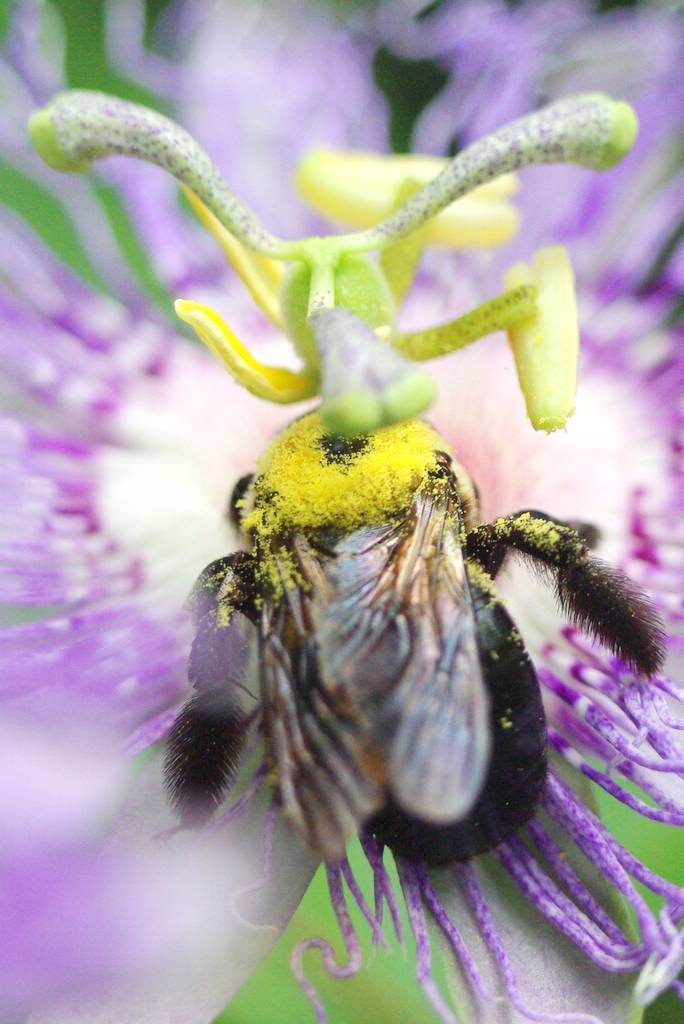

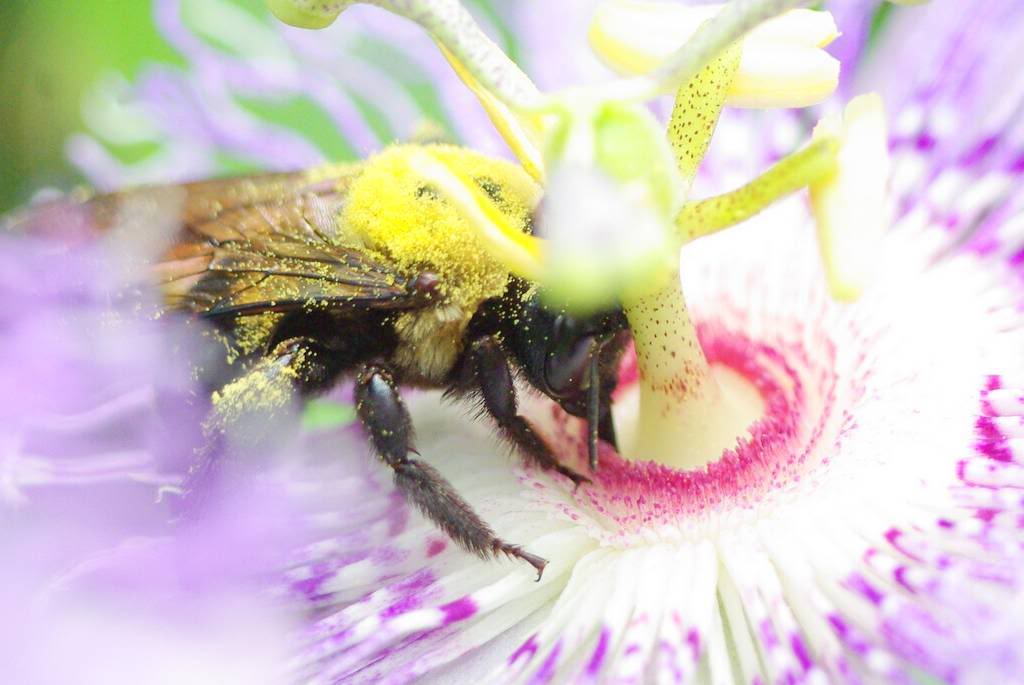

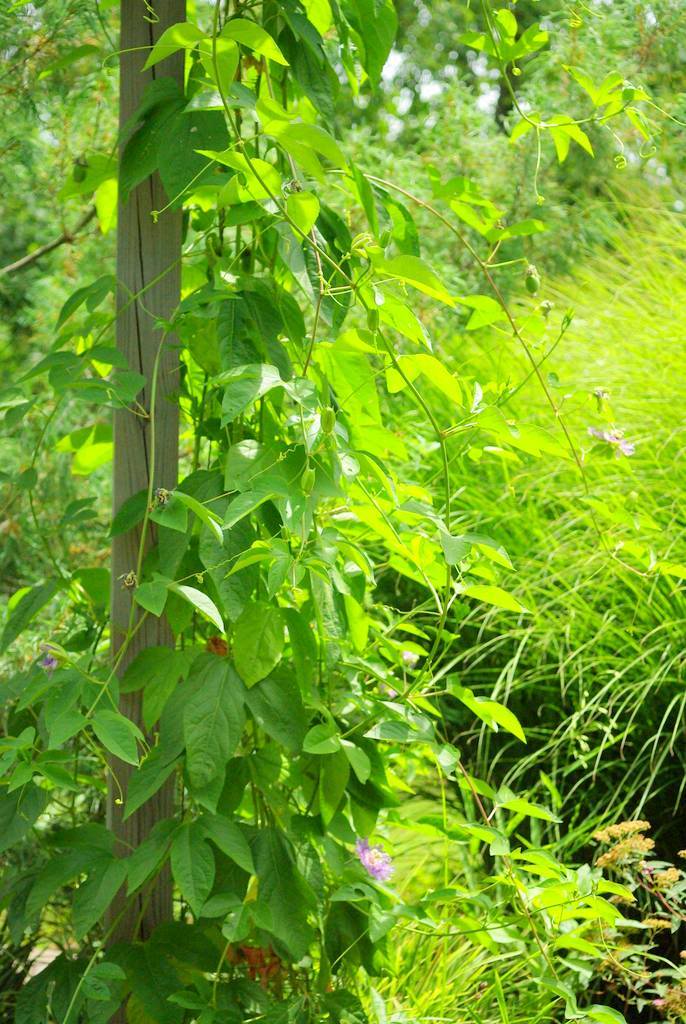

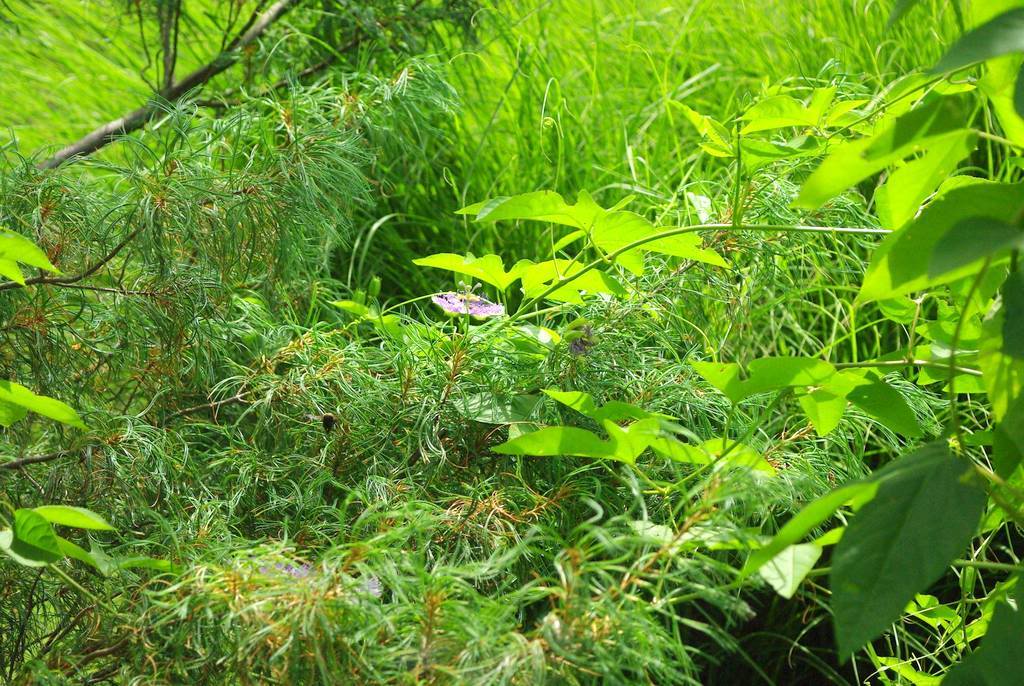
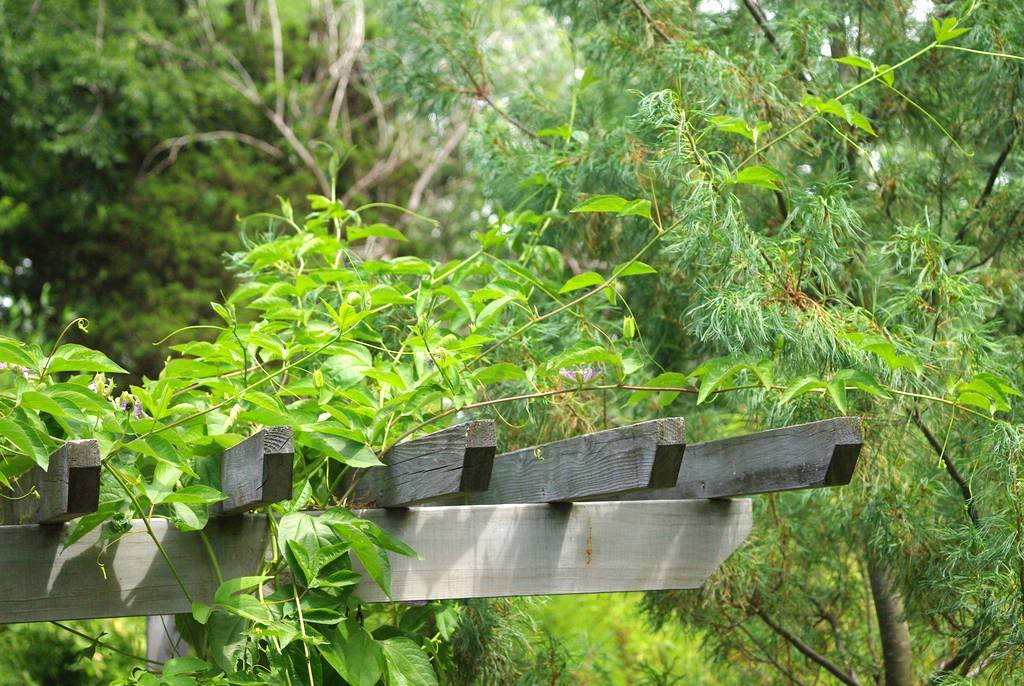
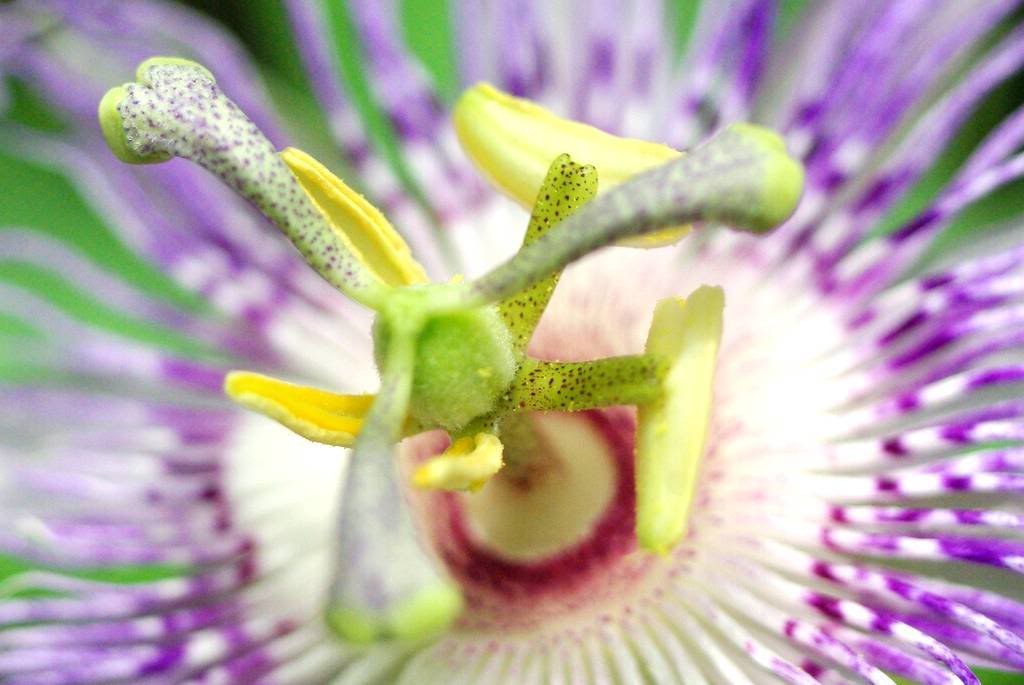
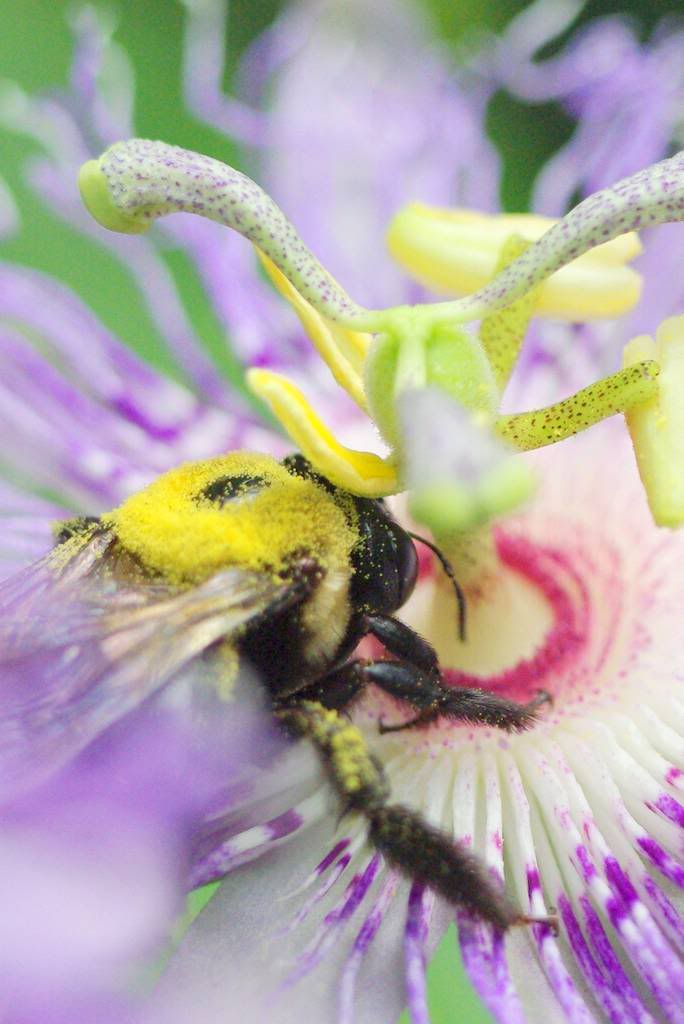
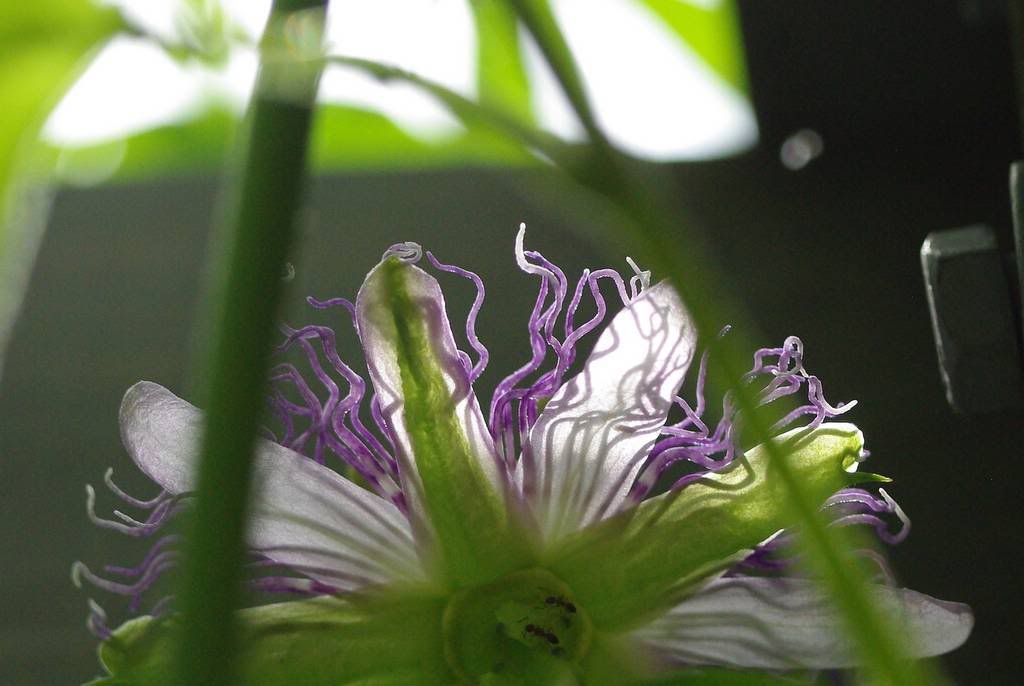

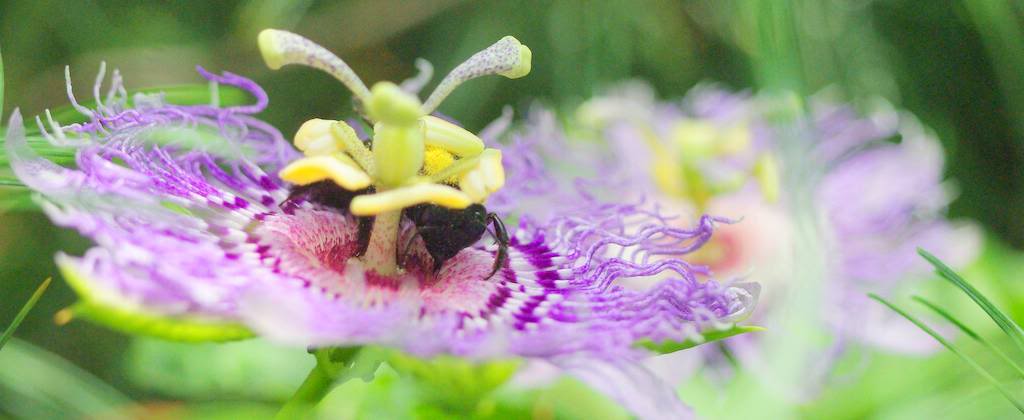

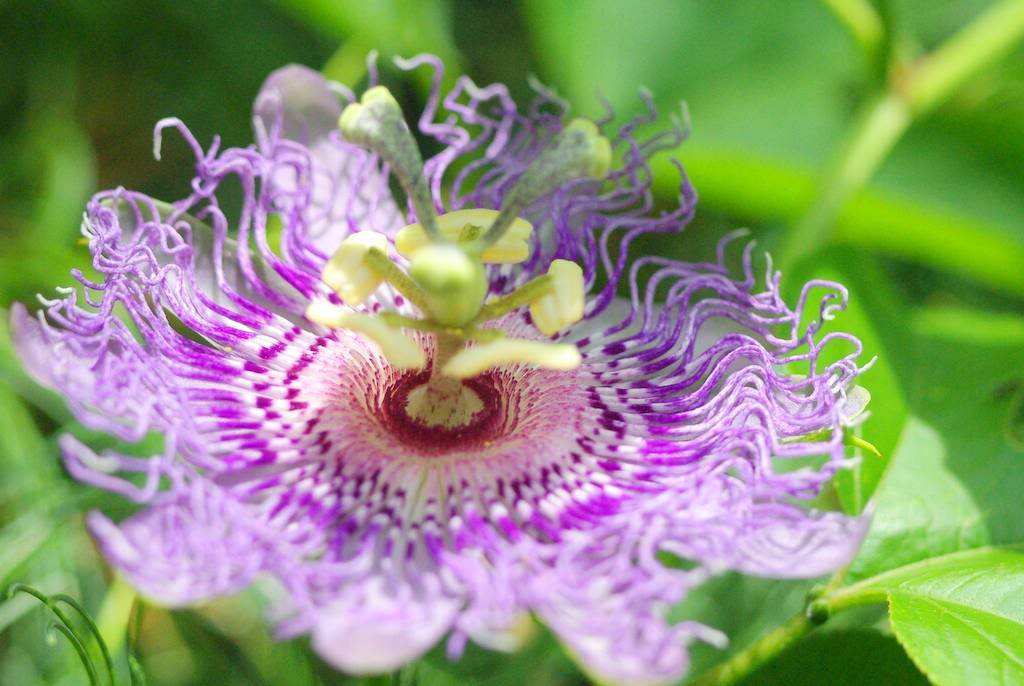




Photos and information worthy of a nature publication, Alan. I had no idea that the blooms opened fast enough to be observed by the naked eye. Amazing! Is that the 'pop' in Maypop, do you suppose?
STUNNING in all caps. Love love love the photos. ANother must-have plant for my garden.
Agree with Sandy & HGerhard - WOW! Photos worthy of publication in a nature mag & a "must-get" for my garden! Love the shots of the fast opening. Amazing that you caught it!
Beautiful! And the suggestion to "click for larger version and full impact" - you weren't kidding! Great, great shots!
Really lucky timing on that passionflower opening and great photos and animation. And super cool observation on the relation between flowers and specific pollinators!